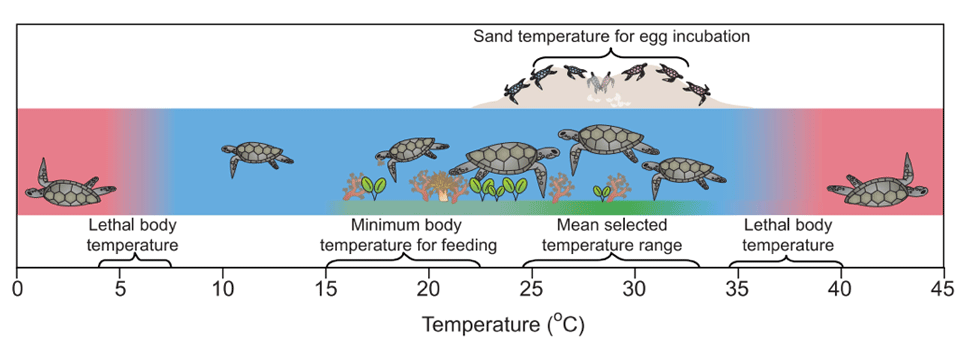You are here
Importance of climate for coastal communities and environments
Australia’s climate affects the safety and prosperity of coastal communities and their environment.
At a glance
- Climate, especially temperature, affects the distribution and health of coastal ecosystems, and the productivity of industries that depend on those ecosystems, such as fisheries.
- Knowledge of climate extremes, their frequency and severity, is integrated into planning, regulation and engineering standards for buildings and infrastructure to ensure safety and capacity to operate under extreme conditions.
- Design and construction that fails to take into account likely climate conditions can be very costly and have consequences for human safety.
- An understanding of the climate, and its variability including weather extremes, is now incorporated in many plans and regulations that affect coastal communities.
Main text
Importance of climate for coastal ecosystems
Australia’s coastal ecosystems are adapted to the atmospheric and marine climates they experience and so any changes in climate will lead to changes in these ecosystems. Land-based ecosystems are influenced by patterns of air temperature and precipitation, which include daily and seasonal changes along with humidity and wind, and the nature of the land surface. At the shoreline, important drivers are wave energy, tidal range and water temperature.
Temperature is a key determinant of the distribution and health of a number of coastal ecosystems. Many corals have evolved within a narrow range of preferred temperature and do not survive quite small increases (just 1-2o C) in temperature if these conditions persist for too many days. The 2015-16 El Niño event, combined with global warming, has led to widespread high ocean temperatures, and is being called the 3rd Global Event of coral bleaching (following the first in 1998 and the second in 2010). Bleaching risk is monitored by a number of groups worldwide – Figure 1 shows the model predictions from the US National Ocean and Atmosphere Administration for February to May 2016.
T1I4_Figure-1.gif

Small changes in temperatures are being shown to affect other coastal species. For example, recent declines of giant kelp off the eastern and southern coasts of Australia have been attributed to rising sea temperatures (Johnson et al. 2011). Turtle embryo development also occurs within a narrow thermal range with the sex of a turtle determined by the embryo’s incubation temperature (Figure 2). Further detail about the potential impacts of climate change on coastal ecosystems can be found in “Impacts: Coastal ecosystems”.
T1I4_Figure-2.gif

Importance of climate for coastal communities
Australia’s climate has affected the shape and location of coastal communities. The early location of many urban settlements was based on a temperate climate, with regular rainfall and abundant fresh water. An understanding of the climate, and its variability including weather extremes, is now incorporated in many plans and regulations that affect coastal communities.
The design and location of settlements and buildings is informed by climate in a range of ways, including:
- coastal setbacks (buffer zones within which permanent constructions are not allowed) in planning guidelines are informed by knowledge of erosion risks from cyclones and storms
- the location of settlements on coastal floodplains is informed by understanding of river flood frequency and extent
- the Building Code of Australia requires that buildings withstand likely physical impacts, including those from gale-force winds during tropical cyclones and East Coast Lows (see Figure 3 and information on Cyclone and ECL impacts)
- knowledge of tides and significant wave heights underpins the design and construction of coastal protection works, harbour works and jetties.
Understanding of average and extreme climate is critical for protection of household assets and community safety:
- insurance companies use models based on the frequency and severity of historic extreme weather events to determine the coverage and cost of insurance for coastal properties
- the elevation of evacuation routes in coastal floodplains, and thus community safety during flood events, is determined by the height of previous floods in the area.
As climate changes, past experience of extremes can no longer be used as a guide to the future. New approaches are required to understand and estimate future risk.
T1I4_Figure-3.jpg

Importance of climate for coastal economies
Climate is a key factor in the design, location and operation of much infrastructure that supports economic activity. Climate thresholds and operating ranges are integrated into design, construction and operating procedures for infrastructure. The importance of this integration is revealed when the climate thresholds are exceeded. For example, thousands of businesses and households lost power when the Basslink interconnector (which allows electricity to be traded between Tasmania and the mainland) shut down after it reached maximum operating temperature during the 2009 heatwave in Victoria.
The productivity of many coastal industries, such as fisheries, is linked to oceanic climate factors, particularly sea surface temperatures and seasonal patterns in coastal currents. There are no robust estimates for the value of climate forecasts for Australian fisheries, although studies are planned for the salmon and tuna industries. Seasonal forecasting has delivered benefits in terms of production and workforce planning, with improvement in profitability estimated to be as high as 10%, worth tens of millions of dollars per year (A. Hobday, personal communication, 22 March 2016). For more information on the economic value of fisheries and how that can be affected by climate change, see "Impacts: coastal fisheries and aquaculture".
Coastal ecosystems (both terrestrial and marine) are one of the major drivers of Australia’s tourism industry, supporting important and iconic locations for recreation and sport. The Great Barrier Reef catchment alone receives about 2.3 million international and 1.8 million domestic visitors per year (Tourism Research Australia 2015). For more information on potential impacts of climate change on the tourism industry see “Impacts: coastal tourism”.
Effective insurance arrangements are important for resilient economic activity and climate, including the frequency and intensity of extreme weather, is a key determinant of insurance affordability and availability (see the Role of insurance for further information).
T1I4_Figure-4.jpg

Further information
Centre for International Economics, 2014: Analysis of the Benefits of Improved Seasonal Climate Forecasting for Agriculture. Accessed 29 March 2016. [Available online at http://www.managingclimate.gov.au/wp-content/uploads/2014/06/MCV-CIE-report-Value-of-improved-forecasts-agriculture-2014.pdf].
Short, A.D., and C.D. Woodroffe, 2009: The Coast of Australia, Cambridge University Press.
Source material
Hamann, M., C.J. Limpus, M.A. Read, 2007: Chapter 15: Vulnerability of marine reptiles in the Great Barrier Reef to climate change. Climate Change and the Great Barrier Reef. Johnson J.E., and P.A. Marshall, Eds. Great Barrier Reef Marine Park Authority and Australian Greenhouse Office, Australia. Accessed 18 April 2016. [Available online at http://www.gbrmpa.gov.au/__data/assets/pdf_file/0012/5430/chpt-15-hamann-et-al-2007.pdf].
Johnson, C.R., and Coauthors, 2011: Climate change cascades: Shifts in oceanography, species' ranges and subtidal marine community dynamics in eastern Tasmania. Journal of Experimental Marine Biology and Ecology, 400 (1-2, SI), 17-32.
NOAA (National Oceanic and Atmospheric Administration), 2015: NOAA declares third ever global coral bleaching event. Accessed 29 March 2016. [Available online at http://www.noaanews.noaa.gov/stories2015/100815-noaa-declares-third-ever-global-coral-bleaching-event.html].
Watson, P., and A. Frazer, 2009: NSW King Tide Photo Event Summary. NSW Coastal Conference 2009. Accessed 29 March 2016. [Available online at http://www.coastalconference.com/2009/papers2009/Phil%20Watson%20Full%20paper%202.pdf].
Tourism Australia, 2015: Coastal and aquatic. Accessed 4 April 2016. [Available online at http://www.tourism.australia.com/documents/TASI9055_Coastal_Factsheet_DestAusCon-V6.pdf].




